The small town of Joseph is an oddity among Oregon travel destinations. In Wallowa County, in the northeast corner of Oregon, the tiny town of Joseph sits roughly 4000 feet above sea-level and attracts tourists with a wide variety of interests.

With a little over 1000 people, Joseph is the second-largest “city” in Wallowa County. The large, rural county (about 7,000 people in an area larger than Delaware) is out of the minds of most Oregonians and unknown to most tourists. The attraction of Joseph and the surrounding area is the exception.
Despite being tiny and remote, there is a lot going on in Joseph. Local history is tied to the Nez Perce tribe (the city is named after Chief Joseph) and Oregon’s early history. The Wallowa Mountains are one of Oregon’s best natural wonders. And tourism is the backbone of the economy in Joseph, thanks not only to the natural beauty, but also a burgeoning art scene and a remarkably well-preserved old town.
What to Do in Joseph, Oregon
What to do in Joseph depends on your interests. There are several reasons to spend a day or so enjoying the town itself, and there are even more reasons to explore the surrounding area.
Shopping
Joseph has a thriving art scene. There are a surprising number of galleries selling artwork of all kinds. Bronzework is a particular local speciality. There are several galleries showcasing (and selling) curious bronze pieces and sculptures, and there are prominent bronze sculptures along the street too.
Aside from local art, like many older small towns, Joseph has plenty of shops full of antiques and old junk. The artsy nature of the town sees these various trinket shops laid out in an appealing presentation to lure in those who enjoy sifting through peculiar secondhand stuff.

On the less expensive end of the shopping spectrum, Joseph has a few souvenir shops that sell local goods of the cheaper, more lighthearted variety. For instance, Sasquatch (Bigfoot) is prominently featured on every souvenir imaginable.

With the exception of the occasional flea market, I kind of hate shopping. Joseph has a lot of cool stuff, though, and it’s one of those endearing small towns that is still dominated by local businesses. While I may not find joy in gingerly stepping through secondhand trinket shops – I’m petrified of the whole “if you break it, you buy it” mantra of these overpriced, cluttered spaces – I can get behind supporting local business.
Wallowa Lake
The picturesque Wallowa Lake sits on the southern edge of Joseph. With a stunning backdrop of the Oregon Alps shielding the lake from the south and west, Wallowa Lake is a major tourist draw in Northeast Oregon.
There is a public beach and boat launch on the north end of the lake, in Joseph. Kayaks, paddleboards and glass-bottom boats are available for rent here if you want to enjoy some time on the water.

On the south shore is Wallowa Lake State Park. This state park has campsites and cabins for rent, though these are in high demand during Summer months. There is also a marina, gift shops, food and another area for swimming.
The lake is sourced by the Wallowa River, which itself is largely sourced from snowmelt in the surrounding mountains. In other words, the water in Wallowa Lake is quite cold. Even on the warmest of Summer days, the lake isn’t ideal for swimming. Some people can handle a little cold water, but I can’t imagine spending very long in the chilly lake. Thankfully, it is a wonderful place to enjoy the scenery on a sunny day.
Wallowa Lake Tramway – Mount Howard
Open from late-Spring to early-Fall, the Wallowa Lake Tramway is a fun, unique experience a few minutes outside of Joseph, Oregon. The changing views from top to bottom are incredible, as riders are taken from mountain forests up to the peak of Mount Howard and an alpine environment.

Operating for about 50 years, the Wallowa Lake tram is surprisingly fun. Not only are the views unforgettable, the shaky ride will challenge acrophobics and weak-stomached individuals. But don’t worry. The tram is safe and regularly inspected.
The Wallowa Lake Tram climbs 3700 feet (vertically) and takes about 20 minutes. The only downside to taking the easy way to the summit of Mount Howard is the price. It costs $36 per adult (up and down), but the view at the top is worth every penny. There is a small cafe at the top, which would certainly be an excellent place for a drink with a view, but the prices here are as steep as the tram ride.

Mount Howard isn’t the highest peak in the Wallowa Mountains (Oregon Alps), but it is the ideal setting for the best view of the range. From the peak, the highest snow-capped peaks of the Wallowas are visible to the west and south, and the Seven Devils Mountains in Idaho are visible dozens of miles away to the east.
There is probably a trail for hiking to the summit of Mount Howard, but it would be an incredibly difficult trek and a long day. Take the tram and enjoy an easy day in nature with unbeatable views.
**Note: Joseph, Oregon is already 4000+ feet above sea-level. The tram climbs nearly 4000 feet more. Those not accustomed to higher elevation should take it slow.
Eagle Cap Wilderness
The Eagle Cap Wilderness is one of the wildest, most untouched places in Oregon, which is already a largely-unspoiled state. It is popular with backpackers (the outdoorsy, nature type of backpacking) for serious backcountry treks and hiking. As the only town near the area, Joseph is the natural start/end point for backpackers.

The Eagle Cap Wilderness is remote and rugged. The area is home to an abundance of wildlife hiding in the mountains including rams, cougars, black bears, elk and even Oregon’s small (but growing!) moose population.
At more than 500 square miles, the Eagle Cap Wilderness is not only the largest protected natural area in Oregon. The rugged terrain and remote location mean that the area is also far less busy than other popular hiking/trekking areas of the state.
Wallowa County Barn Tour
Not every tourist has the time or desire to get lost in the wild for days on end. For a much more comfortable and easier exploration of Joseph and the surrounding rural area, the Wallowa County Barn Tour is a self-guided driving tour of historic and picturesque barns in the county.
There’s something appealing about lonely old barns in tranquil settings. The Wallowa County Barn Tour makes it easy to track these scenes, though getting lost on the tiny backroads in the sparsely-populated, rural counties of the American West is even easier.
Joseph is home to several stops on the Wallowa County Barn Tour, perfect for those who don’t want to stray too far from the road and get lost in middle-of-nowhere Eastern Oregon.

A driving tour of barns may not appeal to many travel tastes, but Joseph is in a part of the country dominated by agriculture. These barns are more than photogenic relics of local history. The fact that most of Northeast Oregon is agriculture or timberland, if not altogether empty, means that a tour like this is an excellent way to explore the culture and really get off the tourist trail. It’s the perfect way to see a side of the United States that too few travelers, American or otherwise, ever witness.
If you’re only interested in rustic barns without the rural America part, that’s okay, too. Several of these historic barns are located in and around the town of Joseph.
Where to Eat in Joseph, Oregon
Joseph, Oregon isn’t known as a hotspot for food-focused travel. As stated, the surrounding natural beauty and the town itself are the primary draws. Fortunately for tourists in Joseph, this little town punches above its class when it comes to food.

Thanks to tourism and the artsy nature of Joseph, there are far more dining options in town than comparable cities. And these aren’t restricted to diners or small town cafes (which, by the way, I love and make places like nearby-ish Baker City a surprisingly enjoyable place to eat).
Joseph has several notable restaurants, ranging from brick-oven pizza to gourmet chocolates. When it’s time to eat, start here:
- Old Town Cafe – breakfast, brunch and coffee
- Gold Room – wood-fired, brick-oven pizza. I mean, what more do you need to know?
- Arrowhead Chocolates – gourmet chocolate shop (honestly, I hate chocolate, but my girlfriend loved this place for the quality and low prices, an usual feature of chocolate shops)
- Embers Brewhouse – great patio, lots of beers, decent food
- Stein Distillery – if you’re not driving…
- Stubborn Mule – local recommendation #1
- Cheyenne Cafe – local recommendation #2
The most popular restaurant in Joseph is Outlaw. While I did not dine here, it was explicitly not recommended to me by several locals. It has a very touristy look. Another popular restaurant, The Dog Spot, is highly-rated, but it goes against my rules – how can a restaurant make such a large variety of food and make it all well? That menu is a bit strange.
Travel & Transportation in Joseph, Oregon
The best and easiest way to travel to Joseph, Oregon is to make a stop on the Great American Road Trip. Frankly, Joseph and the rest of Wallowa County are out of the way and especially rural. Of course, that’s one of the great things about the area, but a car is pretty essential to reach this corner of Oregon.
The Wallowa Mountains have no roads traversing through the range. For instance, if you’re coming from Baker City, even though it’s only 50 miles away, the drive still takes about two hours as you have to drive completely around the mountains.
Other travel times to Joseph are roughly as follows:
- From La Grande (OR) – 1.5 hours (where drivers exit Interstate-84 to Joseph)
- From Pendleton (OR) – 2.5 hours
- From Boise, Idaho – 4 hours
- From Portland – 5.5 hours
There is no public transportation in Joseph, but you don’t need it. The town is so small that everything is within reasonable walking distance.
There is some, albeit limited, public transportation to Joseph. During summer months, the Wallowa Link runs bus services from La Grande to Enterprise and Joseph. It’s cheap ($5 each way), and you can find more information on their website.
Greyhound runs buses from Portland to Boise with stops in Baker City and La Grande, so it would be possible to reach Joseph this way. That would make for an especially slow, unpleasant journey. Joseph is also only be in reach with the Wallowa Link in Summer, meaning travelers in other times of year will still need to rent a car.

Joseph is pretty much in the middle of nowhere. While that makes reaching this part of Oregon more tedious, it makes the visit better. The remote location means that fewer tourists are willing to undergo that travel to Joseph, so even the most popular times of year aren’t terribly busy.
Hotels, Motels & More
Joseph is small. There aren’t many hotel options, and there are no motels in town. There is a small hotel and a few bed and breakfasts:
- The Jennings Hotel
- Bronze Antler B&N
- Belle’s Pepper B&B
- Kokanee Inn
Enterprise, Oregon is a typical small town in the rural American West. About 10-minutes from Joseph, Enterprise is a nice town, but there isn’t much happening (aside from Terminal Gravity Brewing). There are a few more motel options, though:
For a more nature-oriented stay, look towards Wallowa Lake. The community on the south end of the lake has a few accommodation options including:
- Eagle Cap Chalets
- Wallowa Lake State Park (camping, RVs, yurts)
If you want a memorable Eastern Oregon experience (and plan on only visiting Joseph as a day trip), stay in Baker City. Yes, it’s a two-hour drive, but the Geiser Grand Hotel is the most remarkable, historic and peculiar hotel in this part of the United States.
When to Visit
The continental location and elevation of Joseph mean that it gets cold. Temperatures in Summer are typically mild with cool-to-cold nights. Winter is cold.
The best time to visit is the middle of Summer. The weather is perfect, and July 4th brings a big celebration to town and Wallowa Lake. Late-Spring to early-Fall are decent times, depending how well you handle the cold temperatures.
The first snows usually fall in October and the last of the season is normally in April or May. Snow tends to stick, but it’s not at the heavy depths of the Cascades or Rocky Mountains. Basically, Joseph is cold with a little snow for several months. Winter is not the best time to visit unless you plan to partake in Winter sports.
Joseph, Oregon is a peculiar travel destination in a remote, often overlooked corner of the state. The town has a little bit of old American West, some rural Oregon and a dash of Western Oregon. This all comes together to make a unique, pretty tourist town in Northeast Oregon.
Today, Joseph is becoming known more for its artistic qualities and boutique shops. It even has some decent food. Despite that, the city itself and the incredible natural beauty right outside of town remain the dominant tourist attractions.

Northeast Oregon may not be known as a travel destination, but Wallowa County, particularly Joseph, is well worth a visit. This is one unique, out-of-the-way road trip stop that shouldn’t be missed.
This post contains affiliate links. I may receive a small commission for purchases made through these links – at NO additional cost to you.
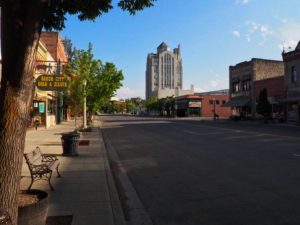

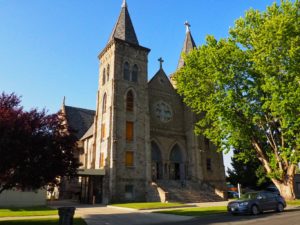
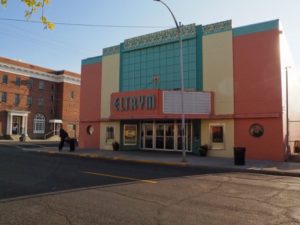
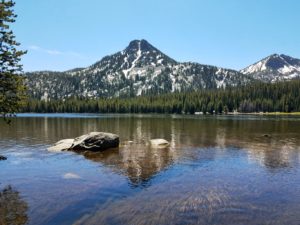
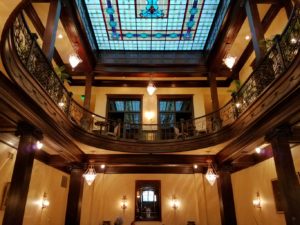



















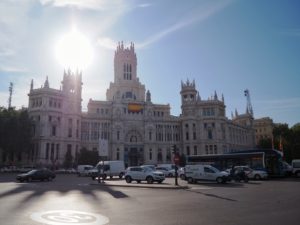



















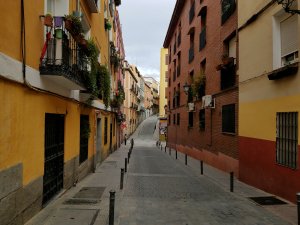
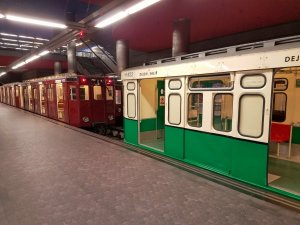

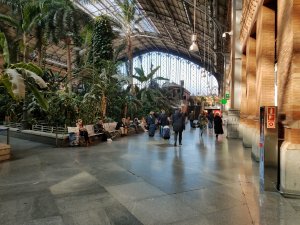





You must be logged in to post a comment.